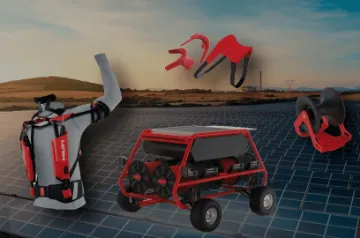- Markets
- Catalogue
- Services and solutions
- Company
- Newsroom
- Tools & Resources
- Documents
- Nexans Insights
- Search
- Contact us
- Compare
- Sign in
Five innovations for buildings' revolution: The path to effective fire safety in buildings


Today, a fire breaks out every 30 seconds in Europe. 25% of fires are due to electrical failures, representing 275,000 fires yearly. With more than half of the world's population living in urban areas and the demand for electricity increasing, ensuring the electrical safety of buildings is critical.
A vital step to ensuring the fire safety of buildings is taking a holistic approach to testing and certifying electrical cables with their associated components.
A key to this holistic approach is understanding how the shifts in electrical consumption and increased load requirements impact the fire safety of both new and older buildings. An estimated 25% of fires are caused by electrical failures or obsolete, overloaded installations. And this statistic worsens in emerging markets where 80% of building fires are due to non-compliant cables.
In essence, fire safety is a growing concern globally, and ensuring the safety of the building's occupants is vital.
Electrification of buildings
Electrical cables are the backbone of buildings. The typical office building houses more than 200 kilograms of electrical cables per 100 square meters. Despite their omnipresence, they are unfortunately often forgotten. In older buildings, this can and often does lead to negligence in retrofitting outdated electrical cables and systems to ensure modern safety standards are met. And, with increasing electricity demand, installations in older buildings are often undersized and thus increase the risk of electrical fires.
Today, most older buildings require significant renovations to ensure their electrical systems are compliant with the rules and can adequately handle the loads required in offices, and residential, public and government buildings.
When it comes to new usages, the electrical architecture has to be considered at the early stage to ensure safety is tackled as a whole. There are still too much datacenters burning all over the world putting at risk the economy and sometimes life despite the availability of integrated solutions. Furthermore, photovoltaic installations are also at risk…
Most buildings run on several fuels. They obviously use electricity for lighting systems and electrical appliances, but they also consume fossil fuels such as natural gas or propane for heating systems. This persistent dependence on fossil fuels makes buildings one of the biggest sources of the pollution that is warming the planet.
The terms "electrification of buildings" and "decarbonization of buildings" all describe the transition from fossil fuels to the use of electricity for heating and cooking. In addition to heating and cooling systems using the latest generation of electric heat pumps, there will also be charging points for electric vehicles, which will systematically equip buildings in the future and help to reduce a major source of carbon emissions in developed economies: mobility.
The goal of such a transition: all-electric buildings powered by solar, wind and other zero-carbon electricity sources. In other words, it's not just a question of increasing the level of electrification of buildings, but also the reliability of their electrical networks.
Fire safety starts with a holistic approach to certification
Cables are seldom the source of a fire, but due to the inherent nature of electrical arcs, their interconnections with electrical equipments and components are prone to igniting a fire. Understanding the interactions between these components is instrumental in ensuring better fire safety in buildings.
Today, most standards and certification bodies focus on validating each component in isolation. This lack of a holistic view of the interactions between electrical components within a building structure must be a concern within the industry. Fortunately, frameworks such as the National Fire Protection Association (NFPA) & Life Safety Ecosystem™ aim to identify the components that must work together to minimize fire risk.
Changing the industry mindset from the certification of each component to consider the interactions of components is fundamental to ensuring their compatibility and overall safety. This holistic and systems approach ensures that proper testing is done to validate that the overall system performance is achieved and certified. And that testing takes into account the usage of components in a real-life setting.
Moving to a systems approach for certification will require suppliers to work together in bringing to market thoroughly tested integrated system offerings that match the performance requirements of customers and failsafe installation processes. This will mean implementing plug and play and modular electrical products that reduce the risk of on-site installation errors and ensure component compatibility.
Nexans' Fire Safety compatibility approach
Nexans aims to provide the highest electrical and fire safety levels by ensuring its cables and wires combat fire propagation, reduce smoke and hazardous emissions during a fire, and maintain the continuous operation of fire safety systems. These are the fundamental pillars of Nexans' Fire Safety solutions and services.
To reduce hazardous emissions, for example, Nexans Fire Safety's offering focuses on Low Fire Hazard (LFH) cables and forgoing outdated materials such as PVC.
Our mission to provide innovative products and solutions that meet the safety needs of our customers extends to our dedication to moving the industry to systems compatibility testing and certification. This is an increasingly important opportunity to ensure the fire safety of new solutions.
For example, Nexans recently took a system approach in developing an electrical vehicle (EV) charging infrastructure offering. To do so, we selected key partners to build the integrated solution, thus proving this approach's viability.
The challenges and opportunities
Creating safer buildings will mean fundamental mindset shifts. For customers, it will mean moving their purchasing decisions from solely component cost to a total cost-of-ownership (TCO) approach encompassing fire risk management.
The industry must also encourage collaboration between key partners to ensure an overall benefit to all stakeholders, in addition to industry certification and performance standards with an active participation of insurance organizations.
In the coming years, new offerings must take a solutions approach to further demonstrate their benefits to customers. These benefits include better fire protection, safety, and ease of installation.
In addition, an integrated fire safety system approach to electrical components aligns with the industry's move to Building Information Modeling (BIM), digital twins, and IoT technologies.
Our websites
Select your country to find our products and solutions
-
Africa
- Africa
- Ghana
- Ivory Coast
- Morocco
- North West Africa
- Americas
- Asia
- Europe
- Oceania








